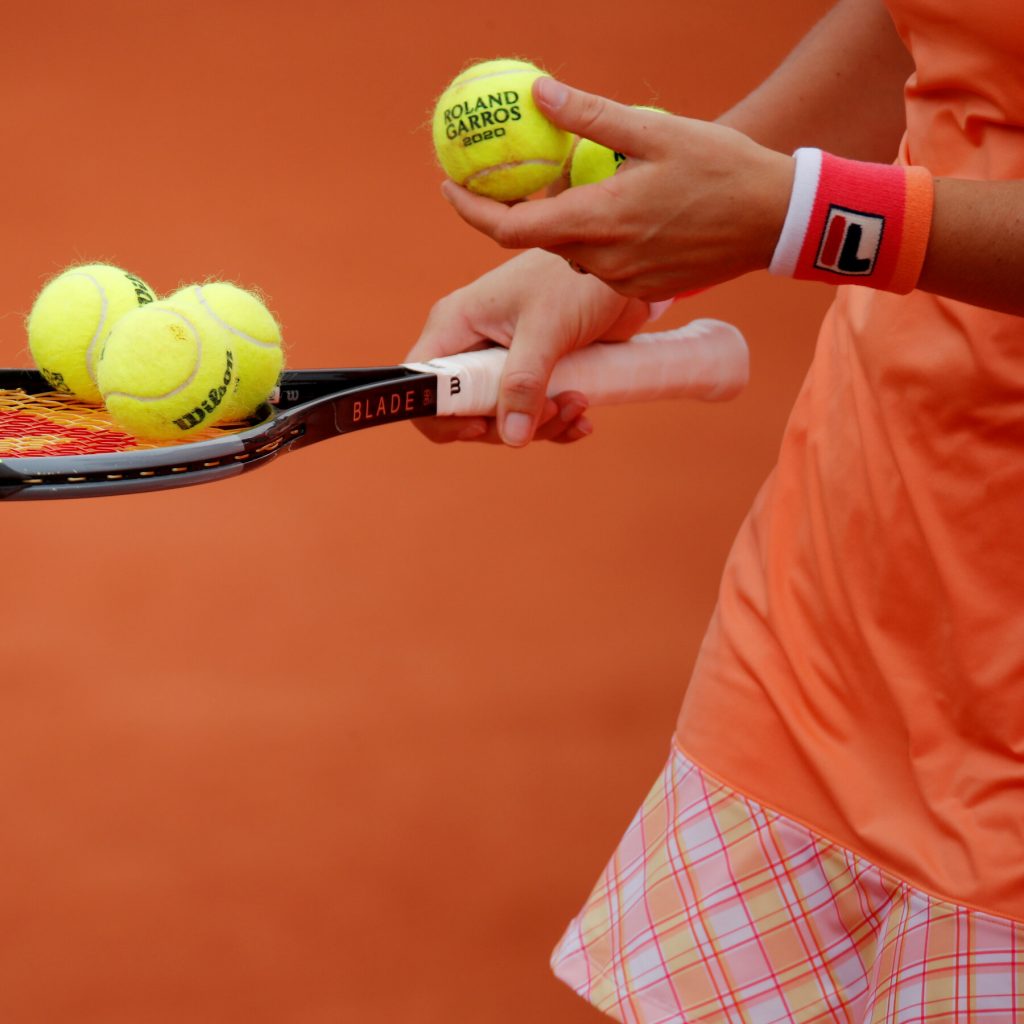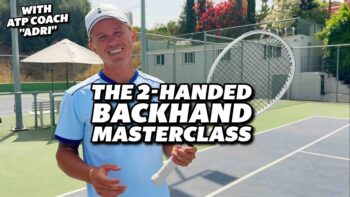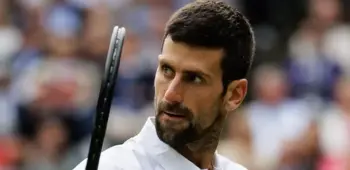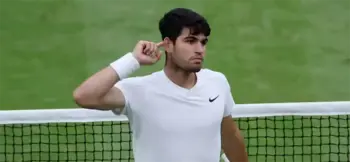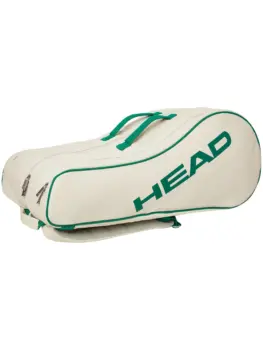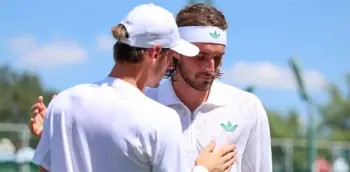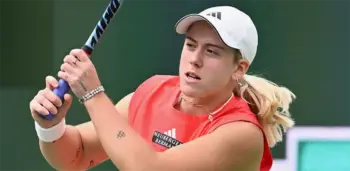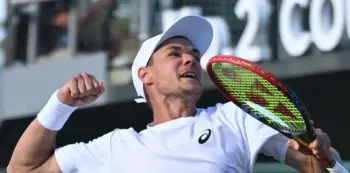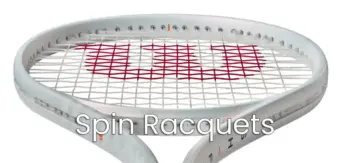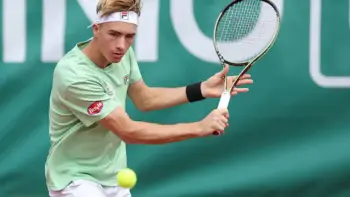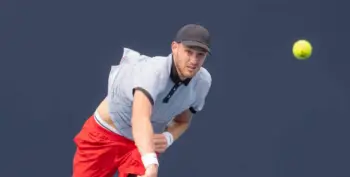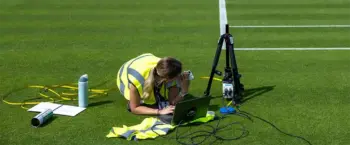Coach Evan is here with his unique take on playing groundstroke points. Word over to Evan. Check out his other posts here.
Playing Groundstroke Points by Evan Gaudreau
The grey sky hid the sun. It was sixty-five degrees, and there was a five-mile-hour wind blowing. Perfect tennis weather.
“Do you want to play a twenty-one?” Noah asked after warm-ups.
“Sure,” Mike said, but he really didn’t want to.
Twenty-Ones were getting boring.
As he walked back to the baseline, Mike thought about starting the game off playing cross courts only and not worrying about what Noah would do. He wanted to think as little as possible and play as simply as possible.
After trading the first six points, Mike built a slight lead.
The score was 7-3.
If it had been 5-5, he would have continued playing the simple cross-court strategy. As he walked back to pick up a ball at the fence, he thought about switching to a quicker pattern. He planned to move every second ball for the following five points and see where that would get him.
He won 4 out of the five points, stretching the lead.
11-4.
He continued the open pattern for a few more points. They traded three points apiece.
Pawn vs pawn, Mike thought.
14-7.
Mike played conservatively and consistently for the remainder of the game and rode out the game with very few mistakes, trading seven points each.
21-14
Once the game ended, they walked over to their bags.
Playing not to lose
“You didn’t miss much,” Noah said. “Especially towards the end. I had a hard time getting into the points.”
Mike shrugged.
“Groundstroke games are boring, dude. The last half of the points I was playing not to lose.”
“But you won the game.”
“Sometimes winning is not everything.”
Noah looked confused.
“Let’s say for the next few months, I keep playing conservatively and winning a lot more groundstroke games. And I do it playing not to lose. Well, I’m going to think it will work all the time, and when I play sets, I’ll carry over that same mentality. But sets are a lot different than groundstroke games.”
“How so?”
“I used to remember going toe to toe with players during groundstroke games, probably going 50-50 in a lot of them and then wiping the player out in sets because their serve stunk or they were pushing the return back, and I would serve and volley the weak return.”
Mike took a sip of his Yeti. Then he went into his bag and pulled out a tube of liquid-IV and poured the powder into a separate water bottle.
“I played consistently at the end to show you winning by playing not to lose can block your game from going forward. Yes, I won, but what did I get out of it.”
He shook the water bottle, mixed the powder with the water, opened the cap, and took a sip.
“Lemon-Lime?” Noah asked.
Mike laughed.
“Yup. That’s all Costco had on the shelf.”
“Lemon-lime or Strawberry.”
“Ya. Their website has tons of options, though. Just don’t buy the Guava flavor. It was nasty.”
They both took a sip of their water bottles.
Two gameplans
“What should I be doing during the groundstroke games?”
“During twenty-ones?” he said rhetorically. “Start out playing two gameplans. One to start the game and one to finish with. During this game, I just focused on crosscourt points; once I got a lead, I played quicker attacking points and finished you off with consistency.”
Noah stared off, thinking and processing what Mike had said.
“If we play another one, I would work on a three to one combo to start and then hide the quick points in the middle again and potentially work on coming into the net.”
“So, I take it we’re not playing another one.”
“Nope. But we’ll change the point format.”
“Like play to 11?”
“No. 7 and 11’s are shooter games. Quick start, then ride it out…there’s not much game-planning in those.”
Mike played a lot of “shooter” games growing up on the court. Most of the time, they were in clinics, and most of the time, they were to keep the clinic moving and rotate the players around so Joey or Jimmy could say they played with whomever the better players were. Just another clinic trick.
Shooter games were more emotional-based too. Like anything quick and easy, like giving a kid a snack every time he whined. Those games focused more on winning than getting an opportunity to switch up gameplans and work on patterns.
Many players fell into the trap of winning being the goal.
They didn’t understand that winning was a by-product of game planning.
Gameplans…not shooters
“During most 21’s, you can play three types of gameplans…during shooters, it’s hard because if the score is at 7-7 or 8-8, you’re more focused on winning or losing than working on anything. They only work if you take winning and losing out of the equation, pretend you were playing a twenty-one, focus on one pattern, and keep getting more reps on that pattern.”
Noah let it soak in.
“So, what kind of format do you want to use for this game.”
“Regular scoring. 15’s, 30’s, 40’s. In some ways, it’s like a shooter game, but you can’t ride out the game.”
“With Ads?”
“Today, yes.”
Take-aways
Here are a couple of things to think about the next time you go out on the court. I was guilty of playing 21s—a lot of them. I felt like they were part of every hitting session, whether it was the groundstroke version or by serving five each. They work to a certain degree if you work on patterns and combos and aren’t afraid to lose while working on them.
Too many players hit the wall through repetitive practicing. There’s a gap time. If you put the work in and improve the simple stuff, you can get to 10 UTR, but many players hover between 10-12 and never get passed the next wall, which is harder to break through than getting to 10.
Duh!
As if you didn’t know.
If you are a higher-level player, start using more regular-based scoring games to work on actual point structures that will carry over to sets.
But, if you are under 8 UTR, any points will help. You are probably not playing enough points and doing too much technical training.
